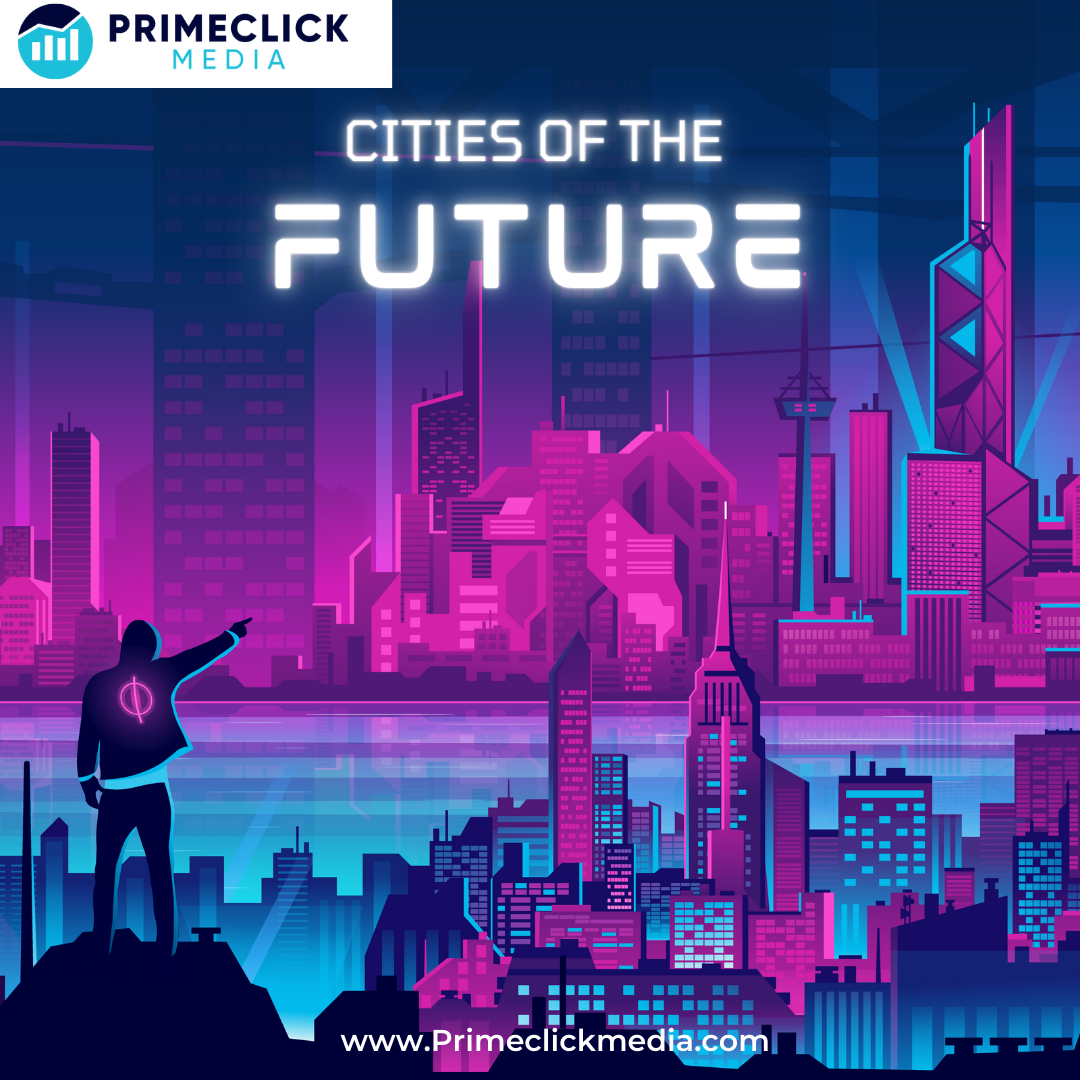In a world that’s buzzing with technology, the future of cities is looking incredibly bright. Imagine super smart streets, buildings that talk to each other, and everything working together like a team of superheroes. Welcome to the exciting world of smart cities!
What Makes a City Smart?
A smart city is characterized by the integration of advanced technology, data-driven solutions, and innovative strategies to enhance the quality of life for its residents, improve sustainability, and optimize urban operations. Several key factors contribute to making a city smart:
- Digital Infrastructure: Smart cities have a robust digital foundation, including high-speed internet connectivity, wireless networks, and sensor networks that enable seamless communication and data exchange among various devices, systems, and services.
- Data Collection and Analysis: Smart cities gather and analyze vast amounts of data from sensors, devices, and citizens. This data-driven approach helps city planners make informed decisions to improve services, address challenges, and optimize resource allocation.
- Smart Mobility: A smart city prioritizes efficient and sustainable transportation systems. This includes intelligent traffic management, public transportation powered by clean energy, bike-sharing programs, and even autonomous vehicles that reduce congestion and enhance mobility.
- Energy Efficiency: Smart cities implement energy-saving measures, such as smart grids, solar panels, and efficient lighting systems. These technologies help reduce energy consumption, lower greenhouse gas emissions, and enhance overall environmental sustainability.
- Waste Management: Smart waste management systems use sensors to monitor garbage levels in bins and optimize collection routes. This reduces unnecessary trips, minimizes overflow, and contributes to a cleaner environment.
- Urban Planning: Smart cities use data and modelling tools to create efficient urban designs, plan for future growth, and optimize land use. This results in well-organized and accessible city layouts that cater to the needs of residents and businesses.
- Responsive Services: Smart cities offer real-time services to residents through digital platforms. Citizens can report issues, access information, and engage with local government using mobile apps, websites, and social media.
- Healthcare and Education: Smart cities leverage technology to improve healthcare delivery and educational opportunities. Telemedicine, online learning platforms, and smart healthcare devices enhance access to quality healthcare and education for all residents.
- Public Safety: Smart cities use surveillance cameras, sensors, and predictive analytics to enhance public safety. These technologies help law enforcement agencies respond effectively to emergencies, prevent crime, and ensure the well-being of citizens.
- Citizen Engagement: Smart cities promote citizen participation by involving residents in decision-making processes through digital platforms. Citizen feedback, surveys, and collaborative initiatives shape urban development plans and policies.
- Environmental Sustainability: Smart cities prioritize eco-friendly practices, such as green buildings, renewable energy sources, and efficient waste management, to minimize their ecological footprint and contribute to a healthier planet.
- Innovation Ecosystem: A smart city fosters a culture of innovation by supporting startups, research centers, and technology hubs. This environment encourages the development and implementation of cutting-edge solutions that address urban challenges.
- Resilience and Adaptability: Smart cities are prepared to handle unexpected events, such as natural disasters or health crises. Resilience strategies include data-driven emergency response plans and adaptable infrastructure.
The Marvel of Smart Cities
Smart cities are like cities with a magic touch. They use the power of technology to make life better for everyone who lives there. Just think about it – traffic lights that change to help cars flow smoothly, trash cans that tell garbage trucks when they’re full, and streetlights that turn on when it gets dark. It’s like the city itself is one big brain!
Smart Ways to Get Around
In a smart city, getting around is a breeze. You’ve got buses that run on electricity, self-driving cars that zoom around safely, and bike-sharing stations on every corner. These high-tech transport options make it easy for people to move from one place to another without the hassle of traffic jams.
A Green City Dream
Smart cities are eco-friendly champions. They use smart energy systems to save electricity and reduce pollution. Solar panels on buildings soak up the sun’s rays to power homes and offices. Parks and green spaces keep the air fresh, and smart water systems help save water, which is super important for our planet.
Talking Buildings and Cool Gadgets
Imagine living in a building that’s as chatty as your best friend. In a smart city, buildings can communicate with each other to save energy. They adjust the temperature, turn off lights when no one’s around, and even let you know if there’s a problem. Plus, you’ve got gadgets galore – from smart doorbells that show you who’s at the door to fridges that tell you when you’re running out of milk.
Safety First, Always
Smart cities are super safe. They use smart cameras to keep an eye on things and make sure everyone’s protected. If something unusual happens, these smart eyes send an alert to the right people, like police officers or firefighters, who swoop in to save the day.
A Hub of Digital Awesomeness
In a smart city, technology is like the star of the show. There’s super-fast internet everywhere, so you can video chat with friends, learn new things online, and even work from home without any glitches. It’s like a digital wonderland where you’re always connected.
People Power
The coolest thing about smart cities is that they’re not just about technology – they’re about people too. Citizens have a say in how the city works. They share their ideas, concerns, and feedback, helping the city become even smarter and better every day.
Undiscovered Potential for Smart-city Technologies to Enhance Urban Quality of Life
Smart-city technologies possess significant untapped potential to enhance the quality of urban life in profound ways. These cutting-edge innovations, fueled by digital advancements and data-driven insights, hold the promise of transforming cities into more livable, sustainable, and efficient environments. Here’s a closer look at how smart-city technologies can bring about substantial, yet unrealized, improvements to the urban quality of life:
- Traffic and Transportation Optimization: Imagine a city where traffic congestion is greatly reduced, and commuting becomes a breeze. Smart-city technologies can facilitate real-time traffic management, predictive analytics, and intelligent transportation systems. By optimizing traffic flow, rerouting vehicles based on current conditions, and promoting the use of sustainable transportation options like electric vehicles and bike-sharing, smart cities can alleviate congestion, decrease travel time, and improve air quality.
- Energy Efficiency and Sustainability: Smart cities have the potential to revolutionize energy consumption and conservation. Through advanced smart grids, energy-efficient buildings, and renewable energy sources, cities can reduce carbon emissions and enhance overall environmental sustainability. Unprecedented energy efficiency measures, combined with the integration of clean energy technologies, can contribute to significant reductions in greenhouse gas emissions and pave the way for a greener future.
- Enhanced Public Safety and Security: The application of smart technologies can lead to safer urban environments. Smart surveillance systems, facial recognition software, and real-time crime prediction models can help law enforcement agencies respond more effectively to incidents and deter criminal activities. Furthermore, emergency response systems equipped with location-based services and crowd-monitoring capabilities can ensure swift and coordinated responses during emergencies, safeguarding citizens’ well-being.
- Healthcare Accessibility and Telemedicine: Smart cities can bridge the gap in healthcare accessibility through telemedicine and digital health solutions. Remote consultations, medical wearables, and health monitoring devices can enable citizens to receive timely medical attention, especially in underserved or remote areas. This accessibility to healthcare resources contributes to better disease management, preventive care, and overall well-being.
- Data-Driven Urban Planning: Smart-city technologies provide city planners and policymakers with invaluable insights through data analytics and modeling tools. This data-driven approach empowers informed decision-making for urban development, infrastructure improvements, and land-use optimization. As a result, cities can be better designed to accommodate population growth, reduce traffic bottlenecks, and enhance overall livability.
- Waste Management Efficiency: Waste management is a crucial aspect of urban life, and smart technologies can significantly enhance its efficiency. Smart waste bins equipped with sensors can monitor fill levels and optimize collection routes, reducing unnecessary pickups and promoting eco-friendly practices. These measures lead to cleaner streets, reduced litter, and improved environmental health.
- Community Engagement and Participation: Smart-city platforms foster greater citizen engagement and participation in local governance. Online portals, mobile apps, and social media platforms provide avenues for residents to voice concerns, offer suggestions, and collaborate with local authorities. This inclusivity promotes a sense of community ownership, transparency, and a stronger connection between citizens and their city’s development.
- Economic Growth and Innovation: The integration of smart technologies creates fertile ground for economic growth and innovation. Smart cities attract investments, nurture technology startups, and provide a platform for research and development. The resulting innovation ecosystem generates job opportunities, drives economic prosperity, and positions cities at the forefront of technological advancement.
The Future Is Here
Smart cities are more than just a dream – they’re a glimpse into the future. As technology keeps growing, our cities are getting smarter and more awesome than ever. From saving energy to making life easier, smart cities are all about creating a fantastic place for everyone to live, work, and play.
So, get ready to step into a world where technology and cities come together to create something truly amazing – a smart city that’s not just a place to live, but a place to thrive!





